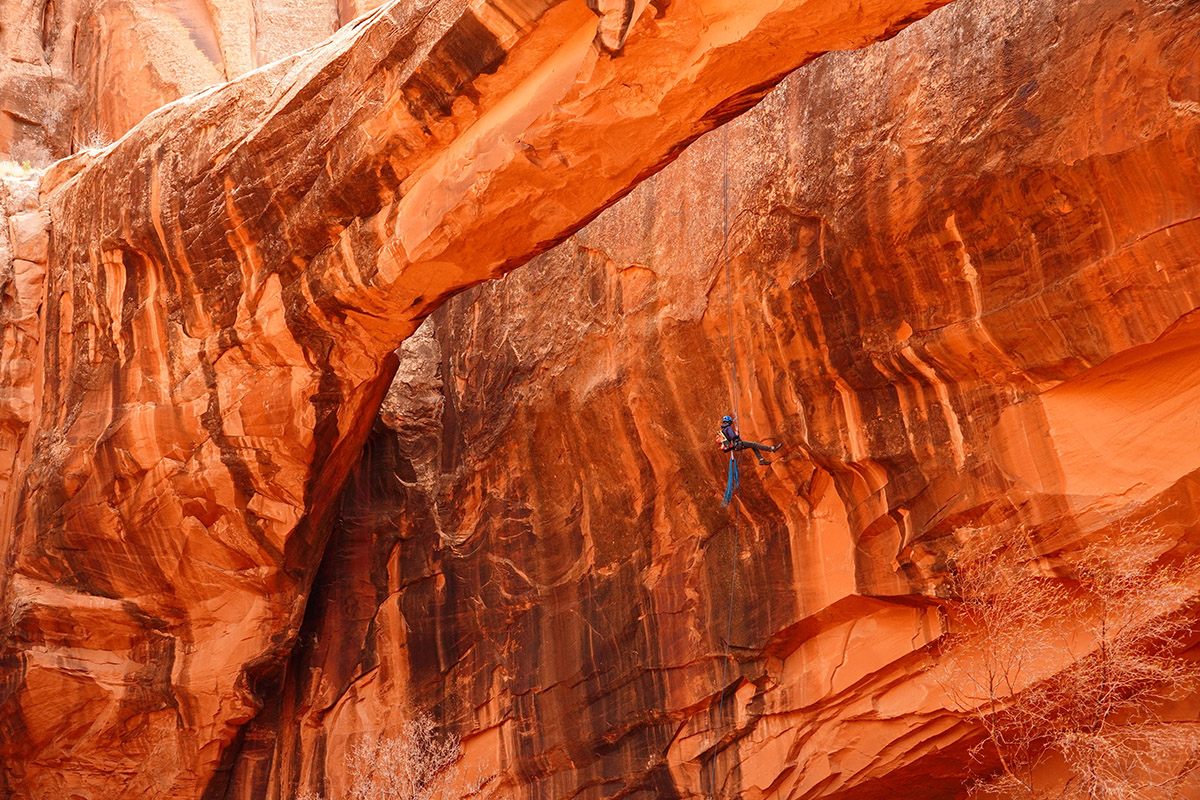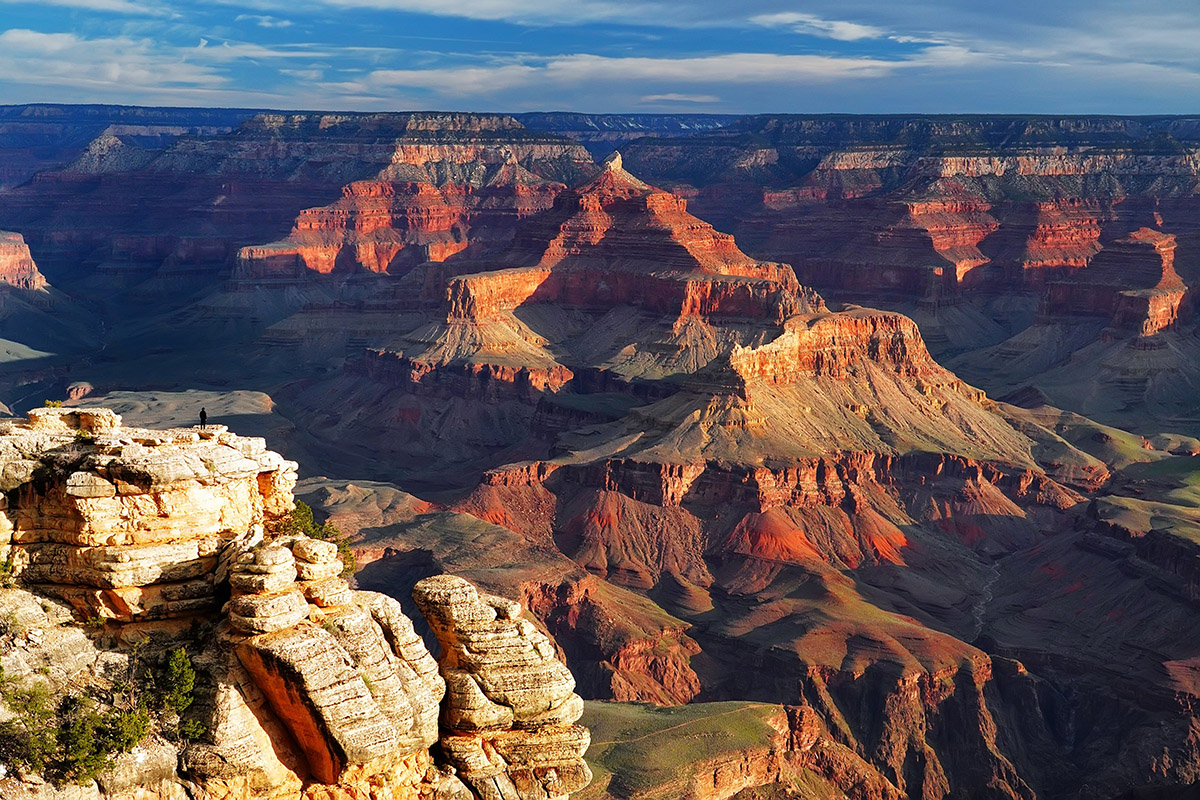Par Jenn Gidman
Images de Don Mammoser
From wide shots of red rocks to close-ups of cactuses, Don Mammoser’s Tamron 18-300mm VC lens tells the story.
In April, Colorado photographer Don Mammoser took a monthlong road trip with his wife and two young daughters through his home state, Utah, and Arizona, exploring the deserts, canyons, and even a serendipitous burst of wildflowers. “Some of the hikes were challenging with a 5-year-old and 1-year-old—I wore the younger one in a backpack on my back—but it was an incredible trip,” Don says. “My older daughter was so excited to earn Junior Ranger badges at the national parks we checked out. A bonus: When we visited Arizona’s Tonto National Forest, we hit it during its superbloom, which typically only lasts a week or two. That was a nice surprise that made for some colorful photos.”

18-300mm (18mm), F13, 1/100 sec., ISO 400
Cliquez sur l'image pour l'agrandir
For his 30-day journey through the American Southwest, Don packed the Tamron 18-300mm VC VXD all-in-one zoom lens for his Sony mirrorless camera system. “It’s the only lens I needed,” he says. “I have lots of other lenses, but it was so convenient to have just one versatile lens for both wide-angle scenes and macro-style photos. The lens is super sharp and lightweight, which was important to me for this trip. I could have my youngest daughter in the backpack and the lens draped over my shoulder, and it didn’t weigh me down at all.”
DON’S QUICK TIPS
Juxtapose people against the landscapes.
This emphasizes the magnificence of the Southwest’s scenery. One day we hiked to the Morning Glory Arch in Moab, Utah. This natural bridge is so massive that when you’re in the canyon below, you can’t capture the entire arch in one photo. I’d decided to just show pieces of it and was taking pictures when a group of rappelers emerged. It was the ideal opportunity to show scale. It helped that the rappeler here wore bright blue to contrast with the red rocks. I did the same for my photo of the Grand Canyon. It’s an amazing view, but if you look closely, you can see a tiny person on the left-hand side of the image, which shows how immense the canyon is.

18-300mm (45mm), F7, 1/200 sec., ISO 640

18-300mm (38mm), F9, 1/250 sec., ISO 640
Don’t give up on dreary days.
The weather was overcast on the day we visited Cathedral Rock in Sedona. The rocks are striking, but I didn’t have high hopes for getting good light on them. Then, as we were eating dinner at a picnic area, the sun started to peek out of the clouds. About 10 minutes later, the sun lit up those rocks and the historical cabin at the base, with the dark sky in the background.

18-300mm (51mm), F9, 1/100 sec., ISO 250
Zoom out for the wide view, then get in close to offer new perspectives.
Another place we visited was Catalina State Park, outside of Tucson. The photos I took of the saguaro cactuses there show the versatility of this lens. The first photo here features the radiant light of late evening on this many-armed cactus, which has to be at least 150 years old. I shot this on the wider end, at 33mm, so I could show more of the environment, with the Catalina Mountains in the background.

18-300mm (33mm), F7, 1/125 sec., ISO 400
Then I zoomed in to 205mm to capture a close-up of a saguaro trunk and highlight the spines, which cover nearly every inch of the cactus’s soft, interior flesh. I was able to get close enough to showcase the spines’ repeating patterns. The 18-300mm is a terrific macro-style lens for this type of close-focusing shot. I was about 3 feet away when I took this photo.

18-300mm (205mm), F13, 1/25 sec., ISO 640
Add visual appeal to your images with bokeh.
The 18-300mm offers both high image quality and soft, creamy bokeh throughout the entire zoom range, and I especially appreciate that bokeh when shooting macro-style images. I headed out one day to take pictures of the butterflies at Arizona’s Roosevelt Lake. The first butterfly you see here, called a white peacock, was in the sun, but I slowly moved my shadow across him so the light wouldn’t be quite so harsh. The second butterfly, called a Julia, was set against some vibrant flowers in the background.

18-300mm (115mm), F8, 1/160 sec., ISO 800

18-300mm (245mm), F8, 1/800 sec., ISO 800
Butterflies can be a challenge to photograph, but that’s where the 18-300mm’s close-focusing ability comes into play. You want to be able to get close, but not too close, or you’ll spook them. With a maximum magnification ratio of 1:2 and a minimum object distance (MOD) of 39 inches at the telephoto end, this lens is ideal. By shooting as wide open as I could, the bokeh created exquisite backgrounds, while the wings of the butterflies stayed sharp.
To see more of Don Mammoser’s work or find out info about his photo tours, check out his site web et Instagram.